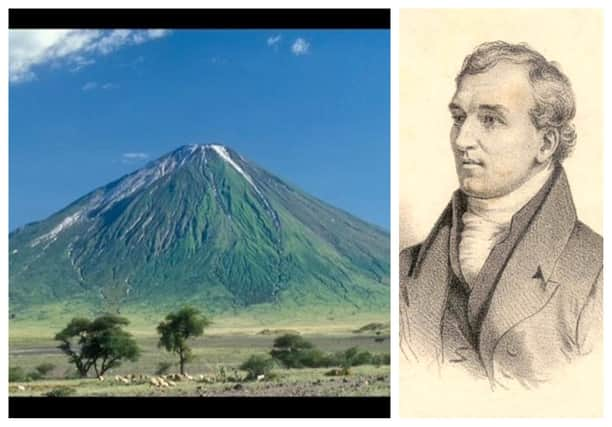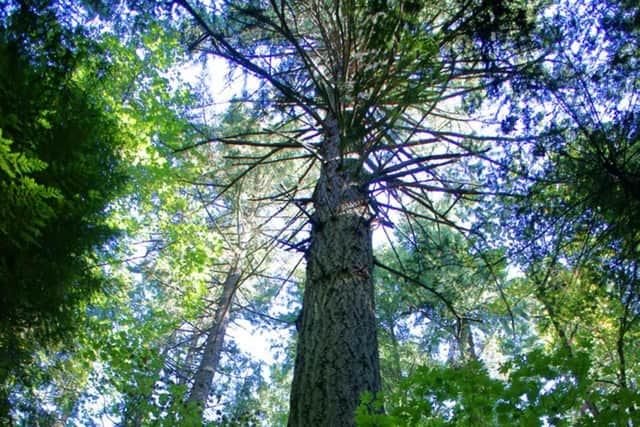The mysterious death of Scotland's most fearless plant hunter


Douglas, from Scone in Perthshire, is remembered as one of the most dedicated plant hunters of the 19th Century who tread hard on a series of tough expeditions to find his treasures.
Sadly, he is also remembered for his violent death in Hawaii in July 1884, some 186 years ago this week, when his injured body was found in a wild cattle trap with a cow lying on top of him. Mystery still surrounds how he fell in to the hole. Some suspect murder and a money purse he carried was never found.
Advertisement
Hide AdAdvertisement
Hide AdDouglas’s discoveries peaked after being sent to North America in 1823 by what is now the Royal Horticultural Society with the Scot trekking through Oregon, Washington, California and British Columbia and into the Canadian Rockies before reaching remote York Factory on Hudson Bay.


The towering Douglas Fir, which he discovered on the banks of the Colombia in the Pacific Northwest, is named in his honour with the Scot also introducing 200 new species to Britain, including honeysuckle, Sitka spruce and the Californian poppy.
He is even credited with bringing a tastier potato to the nation’s plates after returning from Chile with in 1829 with a single root of the Oralis Crenata.
Douglas was killed as he tried to make his way home to Scotland after a fruitful spell combing the rivers and forests of California. By the time he reached Hawaii, however, the botanist was in poor shape. Now blind in one eye, he had fallen out with the horticultural society and resigned from his North American commission.
Douglas’s finances were in a poor state and a plan to return to Britain via Alaska, Siberia and Russia was abandoned. His canoe wrecked on the Colombia and he lost his specimens and notebooks. By the time he reached Hawaii in December 1833, he was described by one witness as a ‘fair, florid Scotsman….about 48 years of age.” He was only 31.
Botanical historical Gordon Mason earlier wrote: “Blind in his right eye, with double vision and blurring in the left, he was also subject to debilitating attacks of rheumatism. Having severed links with the society, lost his collections and journal, been thwarted in his ambitious plan and with declining health, he was no on borrowed time. It must have pained him that the one thing he really wanted to do, plant hunting, might soon be beyond his capabilities.”
Nevertheless, Douglas forged on. Mr Mason wrote of the botanist’s achievements, climbing three great volcanic mountains – Mauna Kea, Mauna Loa and Kilauea - in three
months.
Mason, in an article for Royal Horticultural Society magazine, addded: “These were tough expeditions in poor weather and Douglas pushed himself hard, carrying a heavy load.”Douglas suffered violent headaches on Mount Kea with his sight further failing to the point where blood one day fell from his eye. He returned to Big Island on July 9, 1834. As Mason noted, he had just three days to live.
Advertisement
Hide AdAdvertisement
Hide AdHe was found dead in a cattle pit dug not far from the home of convict Ned Gurney. It is not know whether he fell into the pit or whether he was murdered with a beast then thrown on top of him to disguise foul play.
Some claim Gurney was spotted following Douglas on the day he died. Others say the Englishman spoke of the killing on his death bed. The botanist is buried at Kawaiaha’o Church in Honolulu. There he is at peace, as are the plants and trees that he brought home and still move in the breeze in his honour.
A message from the Editor:
Thank you for reading this story on our website. While I have your attention, I also have an important request to make of you.With the coronavirus lockdown having a major impact on many of our advertisers - and consequently the revenue we receive - we are more reliant than ever on you taking out a digital subscription.Subscribe to scotsman.com and enjoy unlimited access to Scottish news and information online and on our app. With a digital subscription, you can read more than 5 articles, see fewer ads, enjoy faster load times, and get access to exclusive newsletters and content. Visit https://www.scotsman.com/subscriptions now to sign up.
Our journalism costs money and we rely on advertising, print and digital revenues to help to support them. By supporting us, we are able to support you in providing trusted, fact-checked content for this website.
Joy Yates
Editorial Director